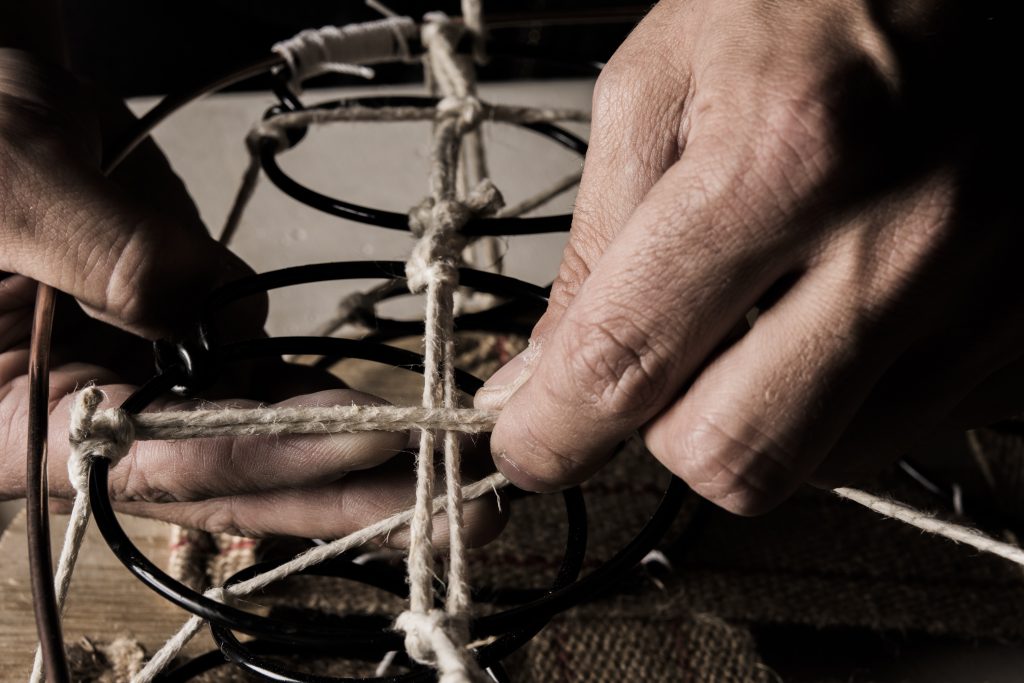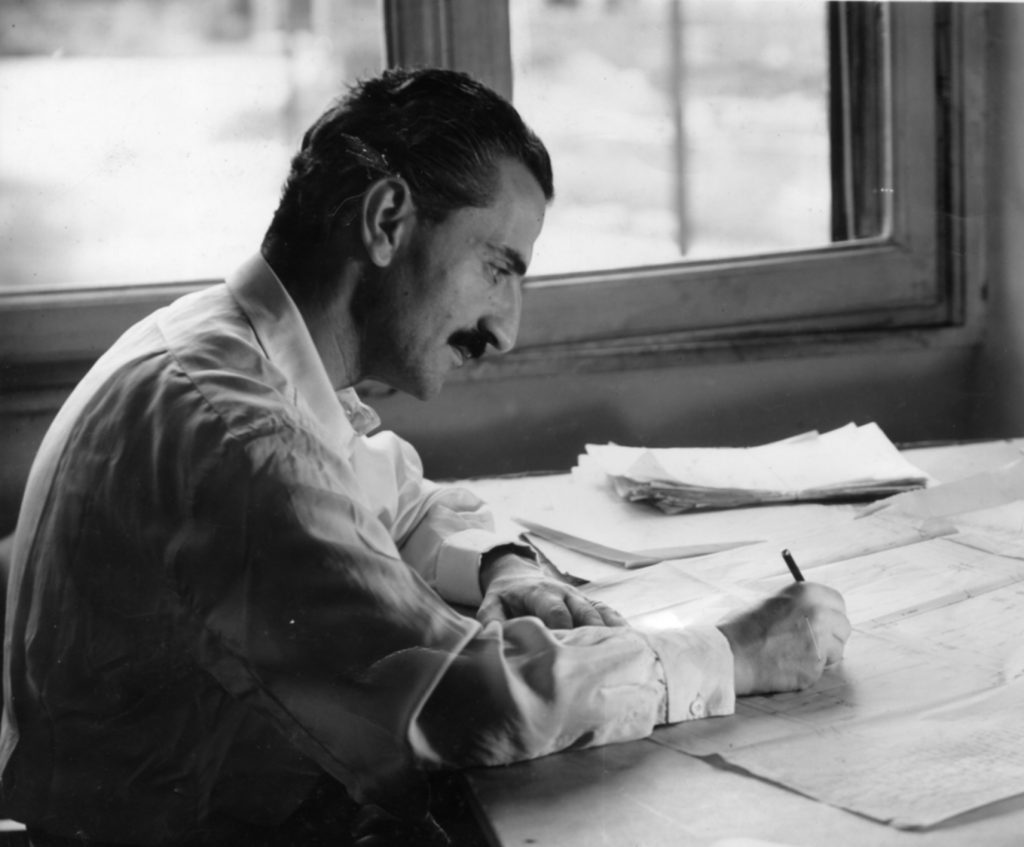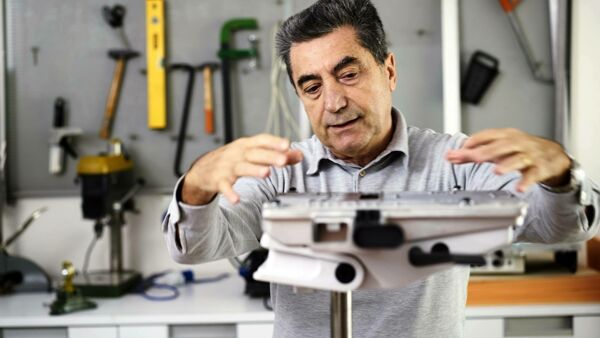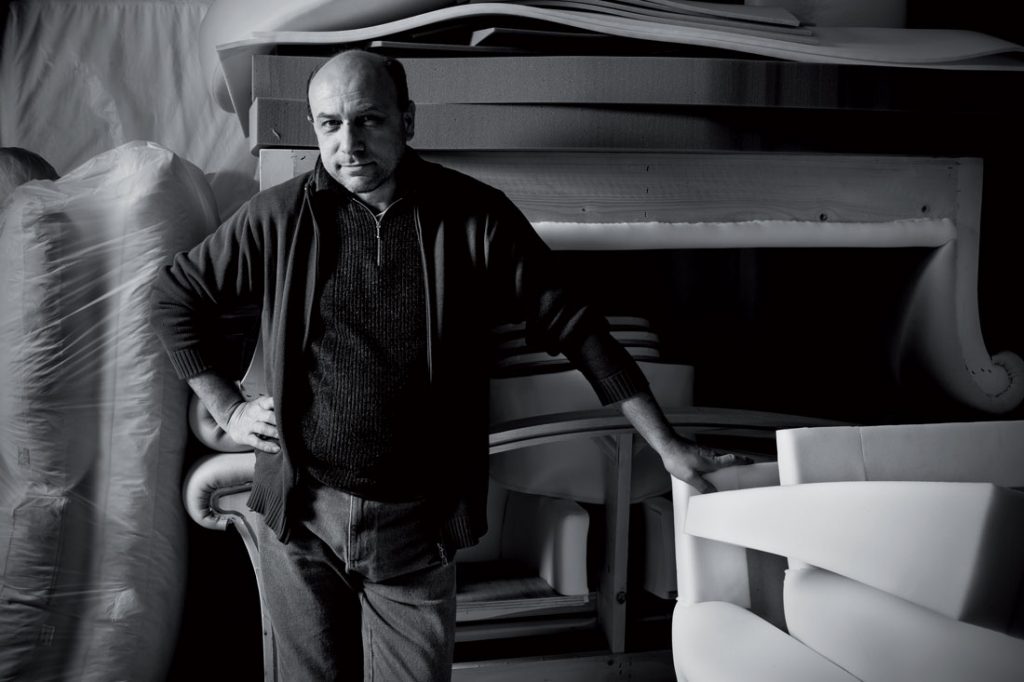Whoever loves Design loves Compasso d’Oro.
The history of the award is, in itself, an award for Italian creative talent.
The award was created in the avant-garde culture developed by the large department store La Rinascente which was the creator and promoter in the early years. It was guided by the genius of Gio Ponti, animated by the ideas and stimuli of people such as Marco Zanuso and Alberto Rosselli and baptised by Albe Steiner – to whom it owes both the idea and the name.
The Compasso d’Oro is still today the golden measure of beauty, an internationally recognised standard of the aesthetics of a product (and in recent years, also of a service).
At the time in which the economic sector which would shortly create the phenomenon of Made in Italy was being formed, the initiative of the Compasso D’Oro was preceded by some important exhibitions.
There are two examples in particular worth a mention for the way in which they reflected the spirit of those times.
The first, as part of the IX Triennial in 1951 was “La forma dell’Utile”, where Rinascente presented a typical apartment for four people with a collection of furnishing designed by Franco Albini.
The second, which was held in the store in 1953 was called “L’estetica del prodotto” and it focused on the inherent beauty of the functionality of everyday objects.

We are in the portentous year, that 1954 which saw the creation of the Compasso d’Oro award.
And even in that first edition where only 15 awards were assigned, one award-winner was “Made in Meda”.
The prize was awarded to an extraordinary name which for decades has spread the creativity of Italian design throughout the world: Cassina.
With the chair 683 designed by Carlo de Carli, Cassina was among the 15 award-winners together with the Olivetti typewriter Lettera 22 and just a few other objects.
The selection was extremely strict, completely focused on exalting excellence as well as defining a professional figure which would become central to the system of industrial production over the following decades: that of designer.
But the award to Cassina in 1954 was only the first in a stunning series which often saw Meda mentioned in the credits of the various winners of this prestigious award in the subsequent editions.
At the end of this post is a list of all the awards which have been connected – in one way or another- to our town either because the winning society was from Meda or because the designer was born here or again because …. both the society AND the designer were from Meda as was the case in 1987 and 2016!.
Each award is reported complete with the reason it was selected where we were able to find it.
In a certain sense, it’s good to think that the light that shines from Meda when we mention Design is also thanks to these marvellous awards.
The design of the award itself has a particular significance: Goeringer’s Compass is considered the instrument used in sculpture to identify the best ratios of proportions, those at the basis of the most classic measure of beauty, the golden section.

1954, Meda – Compasso d’Oro awarded to:
Cassina for the chair mod. 683 (design by Carlo De Carli)
Reason for the award:
Among the innumerable chairs presented by recent production which too often resort to excessively formal fantasies and easy imitations, this chair is an example of true originality.
In the formal structure of the chair, a predominately functional object, this production achieves, with its exemplary use of modern technical procedures (solid wood and moulded plywood) a structural composition of the elements which make this piece, winner of the “La Rinascente Compasso d’oro 1954” award, both an example of formal essential lines and a structural composition which make it a true “typical model”.
1970, Meda – Compasso d’Oro awarded to:
Cassina for the armchair mod. “Soriana” (design by Afra and Tobia Scarpa)
Reason for the award:
In the difficult field of upholstered furniture, the Compasso d’Oro was assigned to the armchair mod. Soriana, taking into consideration the complexity of its image achieved with constructive and technical means of considerable simplicity and consistency.
1979, Meda – Compasso d’Oro awarded to:
Cassina for the Maralunga Armchair-Sofa (design by Vico Magistretti)

1987, Meda – Compasso d’Oro awarded to:
Antonio Citterio for the Sity seating system (production B & B Italia)
Reason for the award:
The jury of the XIV edition decided to confer the Compasso d’oro Award in 1987 to the seating system mod. “Sity” for the constant commitment of the society working closely with the designer to create a typologically advanced product in relationship to the changing behaviour of man in his home.
This gave rise to a renewal process in a sector which, for far too long, had seen designers obliged to work within the limits of tradition alone.
1994, Meda – Compasso d’Oro awarded to:
Antonio Citterio for the system of drawers mod. Mobil (production by Kartell)
Reason for the award:
This object gives the idea of an office characterised by flexibility and a young, innovative style of thought. All the technical solutions are convergent and consistent.
Exemplary the choice of the clear relationship between the metallic material of the support and the translucent, coloured plastic of the drawer unit.
2004, Meda – Compasso d’Oro awarded to the career of:
Rosario Messina (founder of Flou)
Reason for the award:
At the root of this company’s international success is a decades-long vocation of in-depth research into design and comfort in a specialist sector with deep national cultural diversity.
The excellence of its production and communication throughout its entire history represents a valuable contribution to the enhancement of Italian design and products throughout the world.
2016, Meda – Mention of honour Compasso d’Oro awarded to:
Flexform for the armchair mod. A.B.C.D. (design by Antonio Citterio)

Meda is our city.
The city in which our founders Fioravante and Carlo Berto decided to construct our society (and a small piece of the history of Italian Design).
Our dream is to take a new way of working out into the world and to make the “know-how” of the city of Compassi d’Oro award winners available to all!
In Meda you can find the greatest concentration and synthesis of know-how in the world, a city where unique knowledge converges, both for the development of advanced technologies and for the largest number of pens which have prodduced some of the most complex and important designs in the world.
An expert interior designer will be able to make you live the experience of Design Made in Meda thanks to BertO’s activity.
Realize your project. Ask now for your personalised consultation with one of our interior designers!
Ask now for your personal consultation and create your own furnishing project with one of BertO’s Made in Meda interior designers
